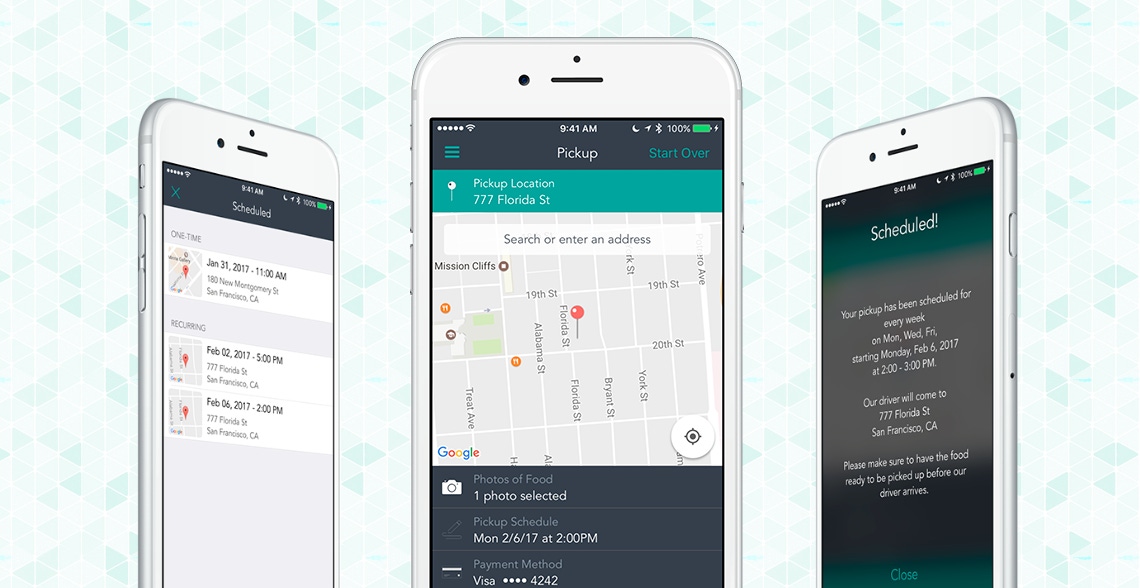How Technologies are Cutting Food Waste Across the Supply Chain
At WasteExpo next month, experts will discuss how technologies are helping the food industry reduce waste.

Technology is playing a key role in reducing and preventing food waste across the supply chain and from one business type to another. It’s facilitating data sharing and insight gleaned from that data at unprecedented speeds.
Online tools enable restaurants to order and do inventory smarter and more efficiently. Vendors gain insight into customers’ buying habits, assisting in their long-term planning. And businesses with excess food are matched with nonprofits to move perishables quickly.
BlueCart, headquartered in Mountain View, Calif., has more than 40,000 customers in foodservice and hospitality that tap into its mobile online procurement platform.
“We actually set out to make it easier for [restaurants] to place orders, and then we saw an organic reduction in food waste. As customers continue to place orders, they can look back and see what they ordered in excess and gain overall insight into ordering patterns to boost efficiency and savings. We helped restaurants we work with cut food waste by 50 percent through intelligent ordering,” says Paul Lang, BlueCart’s head of training. Lang will speak on how technologies are helping the food industry cut waste at a WasteExpo session titled “Using Data and Technology to Drive Food Waste Reduction.”
Chefs see order details before an order is shipped and receive email confirmation. The online process not only simplifies transactions but also cuts mistakes and provides a quicker way to correct them should they occur. Lang says BlueCart’s customers have seen a 90 percent reduction in order errors.
Vendors also leverage information on customers’ buying habits to reduce waste, as they can plan for how much they will grow in the next year while also having a platform to push out surplus quickly and efficiently.
But the technology has to be designed with purpose.
“It’s important to know what the real waste problems are—what’s affecting businesses’ daily operations and focus on that, then make changes to keep up,” says Lang.
Copia, a San Francisco-based company, designs technology to connect businesses with excess food to nonprofits in need, realizing that addressing food insecurity is not about a lack of food but distribution of that food.
“The biggest challenge is getting the right amount to the right place at the time it’s needed. We thought if we could match businesses with nonprofits that need [the food] we could solve these problems for both of them,” says Komal Ahmad, founder and CEO of Copia, who will also speak at WasteExpo.
The platform is an algorithm to determine quantity and food type available to nonprofits that day. It automatically dispatches drivers to pick up and drop off the food.
Nonprofits create a profile of how many people they serve, how they operate and what foods they want. Meanwhile, the data and analytics help generators understand why waste is occurring.
“Developing our system entailed ironing out two things: creating the matching algorithm and providing insightful data and analytics that businesses can act on. We do inventory tracking for them, so we understand what food we are getting and when. And we have learned to help them work out their excess production challenges,” says Ahmad.
She anticipates that, in the future, more powerful predictive analytics will prevent surplus altogether.
“I think we will solve the problem globally by leveraging technology and data that can be scaled and used across industries and by governments,” she says.
As more jurisdictions mandate organics diversion and food waste prevention, she sees haulers getting involved in the technology movement.
“It’s a chance to show they are socially responsible and forming partnerships whereby they provide solutions for their customers to do something greater with their excess food,” she says.
Boston-based company Spoiler Alert has a business model with both software- and people-driven components.
“On the software side, we offer product traceability showing where excess inventory goes, whether it’s to hunger relief organizations, discount buyers or organics recycling providers,” says Ricky Ashenfelter, CEO of Spoiler Alert, who will also speak at WasteExpo. “On the people side, we work with customers looking at data to pursue continuous improvement opportunities, which can focus on introducing new outlets for their products, investing in greater training or using the information to develop employee and stakeholder engagement strategies.”
Ashenfelter believes Spoiler’s model can have the biggest impact by focusing on bulk inventory and greater collaboration with suppliers and customers.
“We don’t think this problem can be solved looking only at individual companies’ operations; it requires dialogues with all supply chain partners,” he says. “Supply chain collaboration and product traceability are big trends. I think there will be a heavy push for data sharing between suppliers and customers and that it will have a sizable impact on food waste reduction.”
About the Author
You May Also Like




.png?width=300&auto=webp&quality=80&disable=upscale)